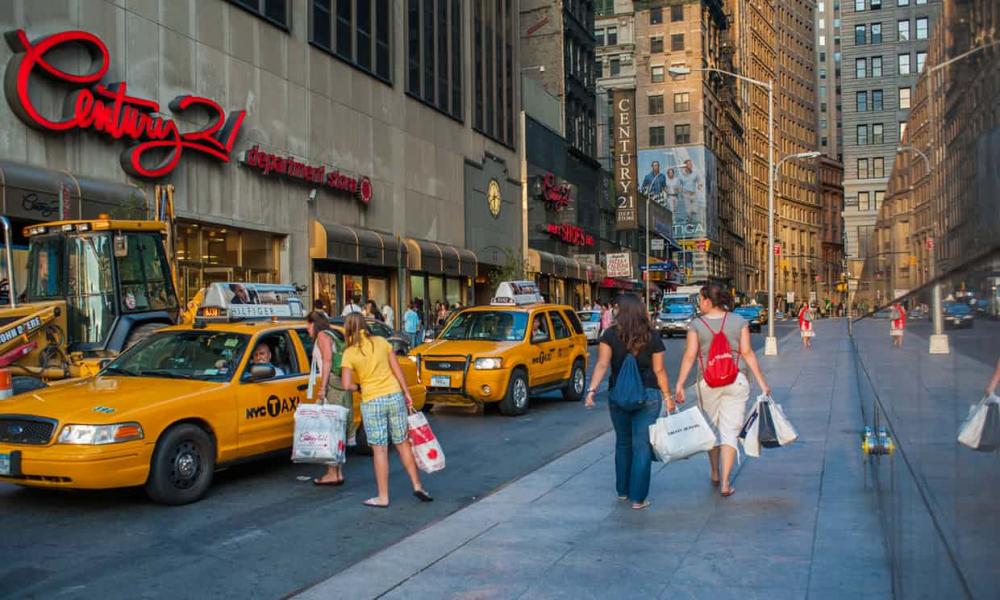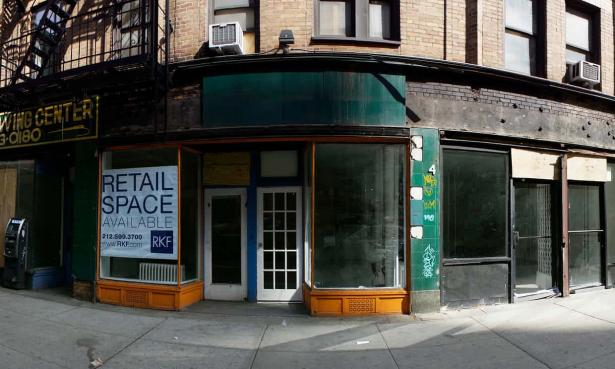Walk down almost any major New York street – say Fifth Avenue near Trump Tower, or Madison Avenue from midtown to the Upper East Side. Perhaps venture down Canal Street, or into the West Village around Bleecker, and some of the most expensive retail areas in the world are blitzed with vacant storefronts.
The famed Lincoln Plaza Cinemas on the Upper West Side announced earlier this week that it is closing next month. A blow to the city’s cinephiles, certainly, but also a sign of the effects that rapid gentrification, coupled with technological innovation, are having on the city.
Over the past several years, thousands of small retailers have closed, replaced by national chains. When they, too, fail, the stores lie vacant, and landlords, often institutional investors, are unwilling to drop rents.
A recent survey by New York councilmember Helen Rosenthal found 12% of stores on one stretch of the Upper West Side is unoccupied and ‘for lease’. The picture is repeated nationally. In October, the US surpassed the previous record for store closings, set after the 2008 financial crisis.
The common refrain is that the devastation is the product of a profound shift in consumption to online, with Amazon frequently identified as the leading culprit. But this is maybe an over-simplification.
“It’s not Amazon, it’s rent,” says Jeremiah Moss, author of the website and book Vanishing New York. “Over the decades, small businesses weathered the New York of the 70s with it near-bankruptcy and high crime. Businesses could survive the internet, but they need a reasonable rent to do that.”
Part of the problem is the changing make-up of New York landlords. Many are no longer mom-and-pop operations, but institutional investors and hedge funds that are unwilling to drop rents to match retail conditions. “They are running small businesses out of the city and replacing them with chain stores and temporary luxury businesses,” says Moss.
In addition, he says, banks will devalue a property if it’s occupied by a small business, and increase it for a chain store. “There’s benefit to waiting for chain stores. If you are a hedge fund manager running a portfolio you leave it empty and take a write-off.”
New York is famously a city of what author EB White called “tiny neighborhood units” is his classic 1949 essay Here is New York. White observed “that many a New Yorker spends a lifetime within the confines of an area smaller than a country village”.
In Vanishing New York, Moss writes of the toll the evisceration of distinct neighborhoods through real estate over-pricing has on the city. “It’s homogenizing and changing the character of the city,” he says. Even where landlords are offering competitive leases, they are often for two or five years, not the customary 10.
“We’re seeing more stores front emptying, and we’re seeing a lot of turnover where you see spaces fill temporarily and then empty. And it’s continuing to get worse,” he says.

Photograph: Kevin Clogstoun/Getty Images/Lonely Planet Images // The Guardian
In business terms, the crisis in commercial real estate has led to a wave of consolidations. Earlier this month, France’s Unibail-Rodamco and Australia’s Westfield agreed to merge in a deal worth $24.7bn to form the world’s second-biggest owner of shopping malls, including Manhattan’s Brookfield Place.
Vacant real estate is not the only effect of an over-priced market; the boom in WeWork, a work-space company valued at around $20bn, and store pop-ups could also be responsible.
But some believe the market could have reached a turning point. “It’s like Hunger Games,” says New York retail property agent Robin Zendell. “If you’re smart and innovative you can survive this market. Landlords and retailers are having to listen to a new generation of shoppers.”
Like Moss, Zendell believes it’s too simplistic to blame Amazon. The same signals of over-pricing are seen in every area of real estate, including housing. “When you see every corner has a bank or a pharmacy, and there is a gym on the second floor, there’s a simple reason for that: people can’t afford the rent.
“Why did restaurants go to Brooklyn? Because it’s cool? No, because it was cheap, and restaurateurs were sick of giving investors’ money away so they could pay thir rent.”
In some areas, notably Bleecker Street, once lined with fashion boutiques including Ralph Lauren and Marc Jacobs, too many vacancies create their own problems. “Rents have fallen but now there are so many empty stores there, nobody wants to be alone. So they’ve created more of a crisis.”
But there are glimmers of turn-around. Zendell has observed five deals in SoHo in the past month, indicating that landlords are becoming too nervous to sit around. “They helped to create the bubble, but now it’s our market.”
Renters insist landlords have an investment in the game, either through taking a performance-based interest in the tenant or some other mechanism. Retailers that signed 10-year leases at a high number per sq ft and then had to pay to get out of that lease are insisting on some participation.
“Any new deal is going to have a pre-nup, the location has to be right, and the landlord has to have some skin in the game,” says Zendell.
Zendell also believes some retailers are beginning to find their way. She cites Everlane as an example of upcoming brand that is managing to harness the power of the internet to bricks-and-mortar retail. Online, she points out, is good for things you need, but less so for things you want.
“You still need people and interaction, but you need a different approach: the modern customer is very smart. Brick and mortar used to be only about sales, now it’s about marketing, driving people to the internet and for helping people to understand your product.”
[Edward Helmore has lived in New York for a decade, working as a reporter for the Observer and Guardian as well as for several magazines, including Vanity Fair, on subjects ranging from presidential politics and Wall Street to professional bull riding, the Rockettes and Bob Dylan.]


Spread the word